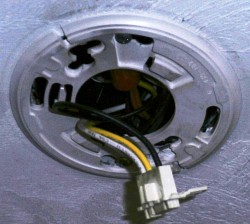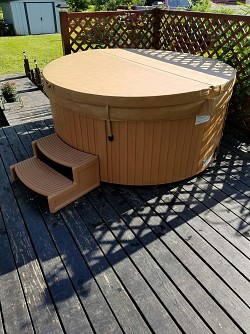What to Do When an Electrical Outlet is Hot
I live in a very old house. I love it here, but it does come with its fair share of problems. Old lead-containing paint, a sloping foundation, and worst of all, the potential for faulty wiring. I’m a renter, which means there’s only so much I can do in terms of preventive repairs. So for my own peace of mind, I’ve spent time researching various issues that might arise, and red flags I need to watch out for. One major example: an electrical outlet that’s hot to the touch.
An electrical outlet should NEVER be hot. If you find one that is, then something has gone wrong, and you need to address it immediately. Here are the steps to take:
1. The most important thing to do if an electrical outlet is hot is to find the circuit breaker that controls that outlet, and turn it off.
2. Then unplug everything from the hot outlet.
3. Now look at what was plugged in. This is important because many devices, such as cell phone chargers, cordless drills, and printers (to name just a few), use an internal transformer to change the voltage input. These devices can actually cause an outlet to become warm, though never too hot to touch.
Still, if a transformer-containing device has been plugged into the outlet, simply unplug it and wait an hour or so. At this point the outlet should have returned to normal ambient temperature. Plug in a non-transformer-containing device to confirm that it was the device's fault and not a defective outlet. If it doesn’t heat up again, your outlet is fine.
4. Investigate the possibility of an overloaded circuit For starters, consider whether the appliance you unplugged was simple, like a lamp or TV. Or stranger yet, what if nothing was plugged into the hot outlet at all? This can happen. Most homes have circuits which are wired in a series, so the electrical current used by one outlet may also pass through many other outlets. Therefore, the outlet may become warm due to overload, even if it only has one device plugged in, or is not actually being used at all.
Overload occurs when the electrical circuit is carrying more current than it’s designed to handle. This will cause it to overheat if the breaker doesn’t trip. If you have multiple appliances plugged into the outlet, or multiple appliances plugged into outlets on the same series, then it’s possible that the circuit is overloaded.
5. Danger alert. However, it's possible the outlet is old and worn out and now has loose contacts, or the wires may even be touching. This can be very dangerous, because instead of tripping a break or blowing a fuse -- which disconnects power and thus removes risk -- a bad connection does allow electrical current to flow even though there’s resistance. When current flows through a series resistance in the circuit, it can get very, very hot. This is why a bad connection can start a fire.
6. Contact an electrician. Ultimately, you’ll need a reliable electrician to check the connections. The outlet may need to be repaired or replaced, but either way, this is a job for a professional.
7. Call the fire department if necessary. If this is all happening late at night, it may be too late to call an electrician. However, if you are concerned for your safety or truly fear a fire, you can always call the local fire department. Inform them that it is a non-emergency, but you'd like them to come check things out and make sure there’s no immediate risk. This will give you the peace of mind to get through the night.
Then call a licensed electrician first thing in the morning.
Sayward Rebhal writes for Networx.com.
Updated December 27, 2018.
Looking for a Pro? Call us (866) 441-6648

Electrical Average Costs
Electricians Experiences

Smoke Detector Replacement Was Done Well And Saved Us Money

I Wanted To Hire An Electrician To Wire Our New Hot Tub – The RIGHT Way




